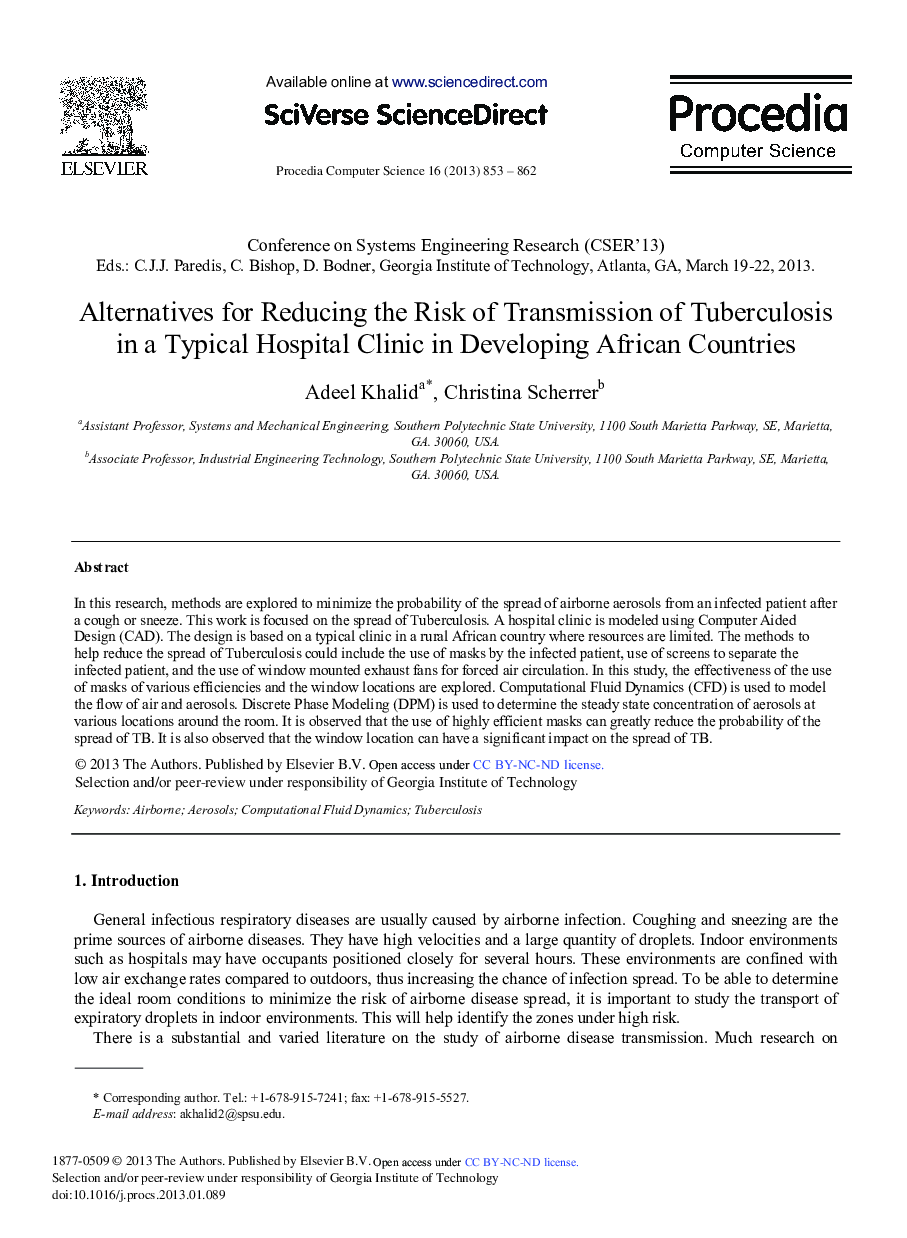| Article ID | Journal | Published Year | Pages | File Type |
|---|---|---|---|---|
| 486635 | Procedia Computer Science | 2013 | 10 Pages |
In this research, methods are explored to minimize the probability of the spread of airborne aerosols from an infected patient after a cough or sneeze. This work is focused on the spread of Tuberculosis. A hospital clinic is modeled using Computer Aided Design (CAD). The design is based on a typical clinic in a rural African country where resources are limited. The methods to help reduce the spread of Tuberculosis could include the use of masks by the infected patient, use of screens to separate the infected patient, and the use of window mounted exhaust fans for forced air circulation. In this study, the effectiveness of the use of masks of various efficiencies and the window locations are explored. Computational Fluid Dynamics (CFD) is used to model the flow of air and aerosols. Discrete Phase Modeling (DPM) is used to determine the steady state concentration of aerosols at various locations around the room. It is observed that the use of highly efficient masks can greatly reduce the probability of the spread of TB. It is also observed that the window location can have a significant impact on the spread of TB.
